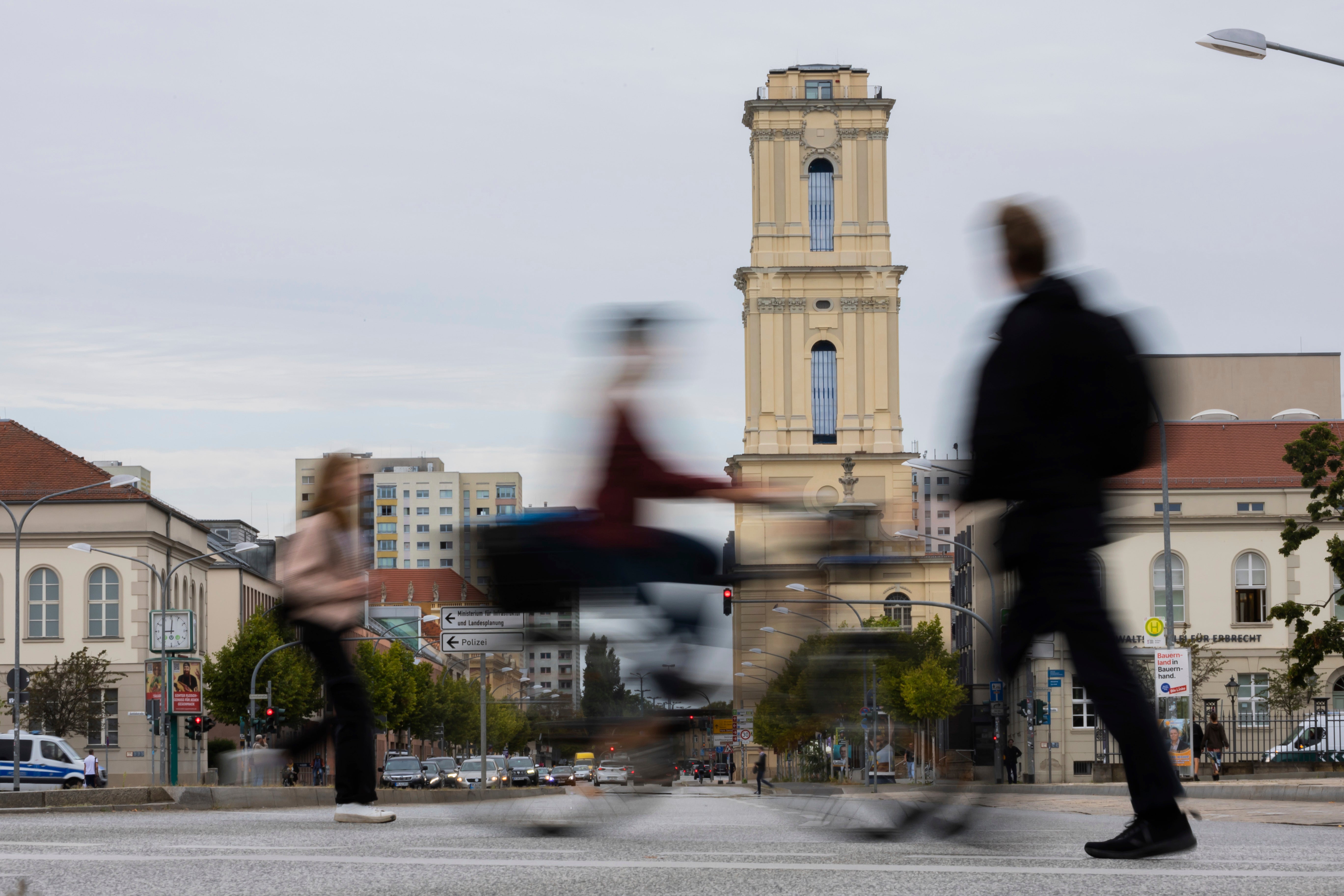Protests at reopening of German church with links to Hitler and the rise of the Nazis
Concern about the strength of the far right has mounted in Germany in recent months

Germany’s president has inaugurated the tower of a church that became associated with the Nazis’ takeover of power.
President Frank-Walter Steinmeier said it offers an opportunity to reflect on the country’s complicated past amid a surge in authoritarian and antidemocratic attitudes.
The baroque tower of the Garrison Church, rebuilt with a viewing platform 57 metres (187 feet) above street level, rises over the centre of Potsdam, just outside Berlin.
Mayor Mike Schubert said it “provides a new view over the expanse of our city and also into the depths and the abysses of our history”.
On March 21, 1933, the Garrison Church, or Garnisonkirche, was the scene of the first opening of parliament after Adolf Hitler became chancellor - weeks after the fire at the Reichstag building in Berlin that was followed by the suspension of civil liberties.
Outside the church, Hitler shook hands with President Paul von Hindenburg.

The scene came to symbolise the alliance of the “new” and “old” Germany, between the Nazis and conservative traditionalists.
The church was originally built in the 1730s to serve the Prussian royal court and the military.
It burned out in bombing shortly before the end of the Second World War in 1945, and the remains of the tower were blown up under East Germany’s communist government in 1968.
Ambitions to rebuild the church - and opposition to the plans - date back to the 1990s.
The partial reconstruction was eventually carried out by a foundation backed by the Protestant church.
Critics view the church as a symbol of militarism and a place the far-right could identify with.
More than 100 people demonstrated opposite the tower on Thursday in a protest organised by a group that has opposed the rebuilding.

Backers aim to counter the opposition with an exhibition taking a critical look at the history of the site.
The words “Guide our feet into the way of peace” are inscribed into the base of the rebuilt tower in five languages.
The regional Protestant bishop, Christian Stablein, pledged at the inauguration ceremony to ensure that “the enemies of democracy and peace... have no place here.”
Mr Steinmeier acknowledged that the road to rebuilding the tower “was long, it was complicated and, as we can hear outside, it remains contentious”.
“This place challenges us,” he said. “It confronts us with its and with our history.”
Under the kaisers, preachers at the church “put religion into the service of nationalist propaganda, glorified war and unconditional obedience,” Mr Steinmeier said.
After the end of the First World War and the monarchy, it still “attracted antidemocratic forces”.
But he said the building’s hefty historical baggage, and the debate about it, offers opportunities today.
Concern about the strength of the far right has mounted in Germany in recent months.
The far-right Alternative for Germany party appears on course for strong performances in three state elections in the formerly communist east - including in Brandenburg, whose capital Potsdam is - over the next month.
Join our commenting forum
Join thought-provoking conversations, follow other Independent readers and see their replies
Comments
Bookmark popover
Removed from bookmarks